
How to Use NEO-M8N: Examples, Pinouts, and Specs
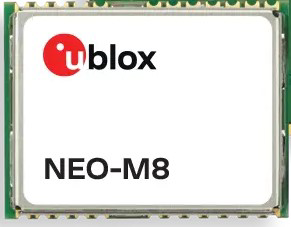
 Design with NEO-M8N in Cirkit Designer
Design with NEO-M8N in Cirkit DesignerIntroduction
The NEO-M8N is a high-performance GPS module manufactured by U-Blox (Part ID: NEO-M8N-0-12). It is designed to provide accurate and reliable positioning data by supporting multiple Global Navigation Satellite Systems (GNSS), including GPS, GLONASS, Galileo, and BeiDou. The module is known for its fast time-to-first-fix (TTFF), low power consumption, and robust performance, making it suitable for a wide range of applications.
Explore Projects Built with NEO-M8N
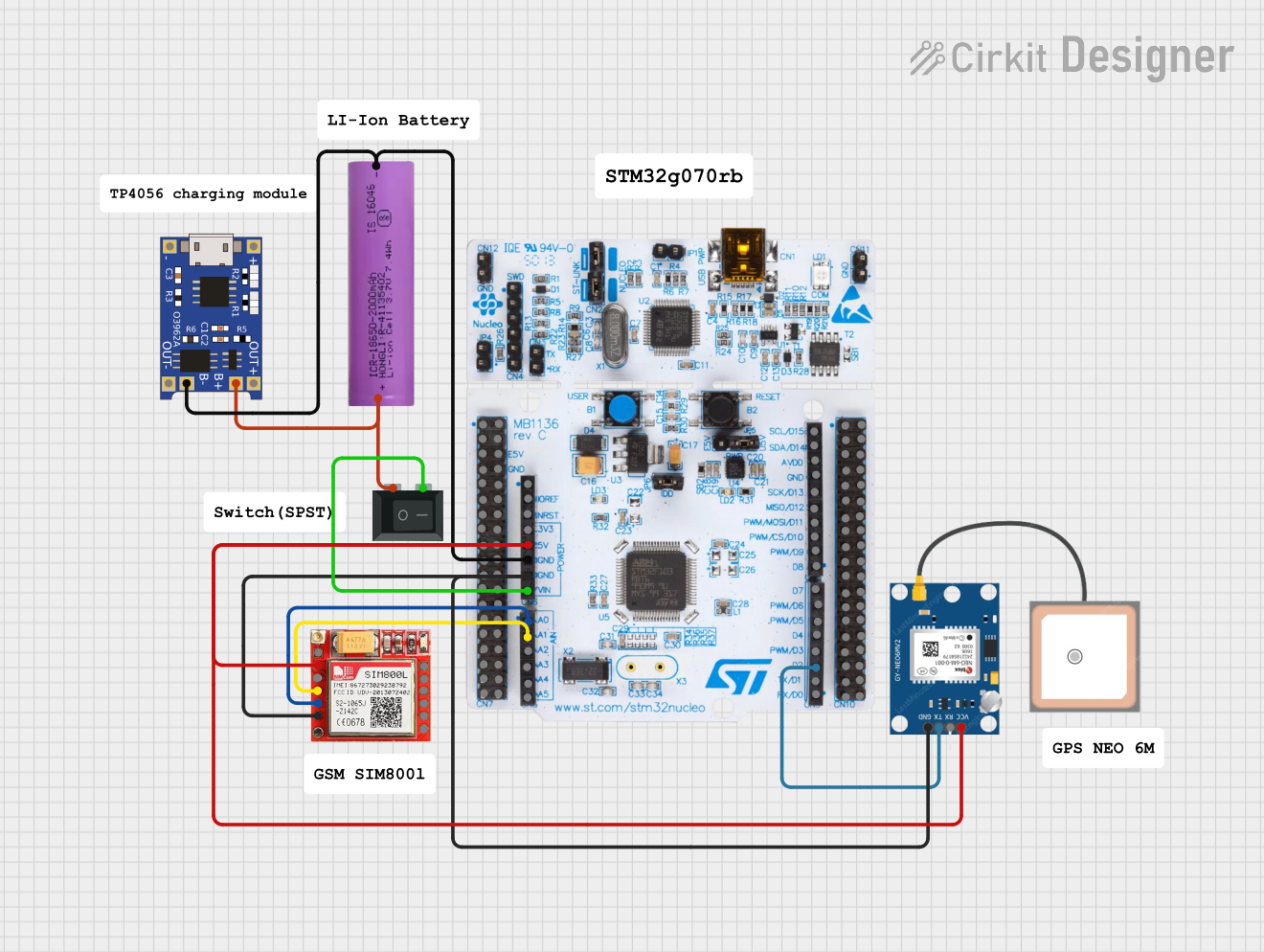
 Open Project in Cirkit Designer
Open Project in Cirkit Designer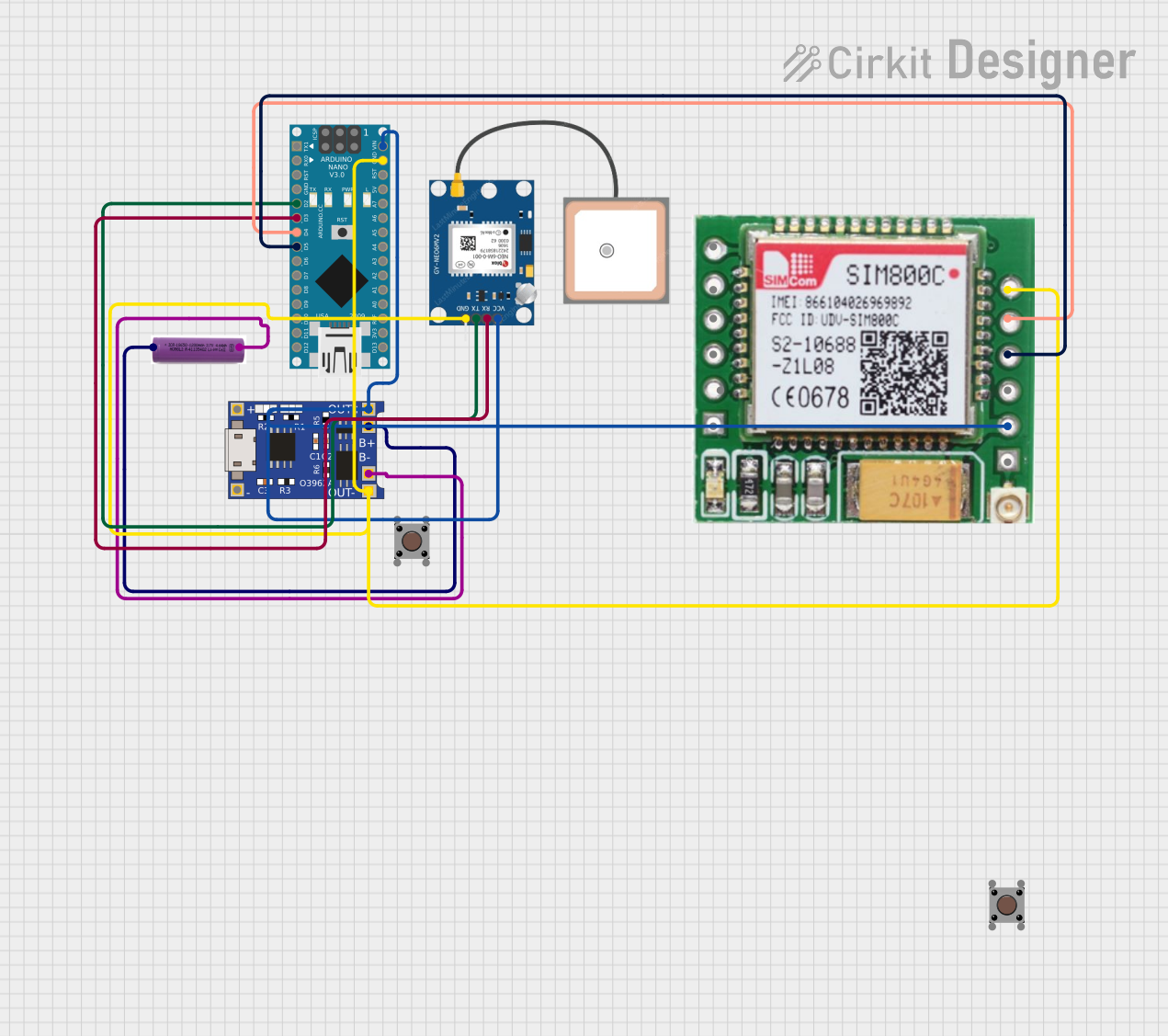
 Open Project in Cirkit Designer
Open Project in Cirkit Designer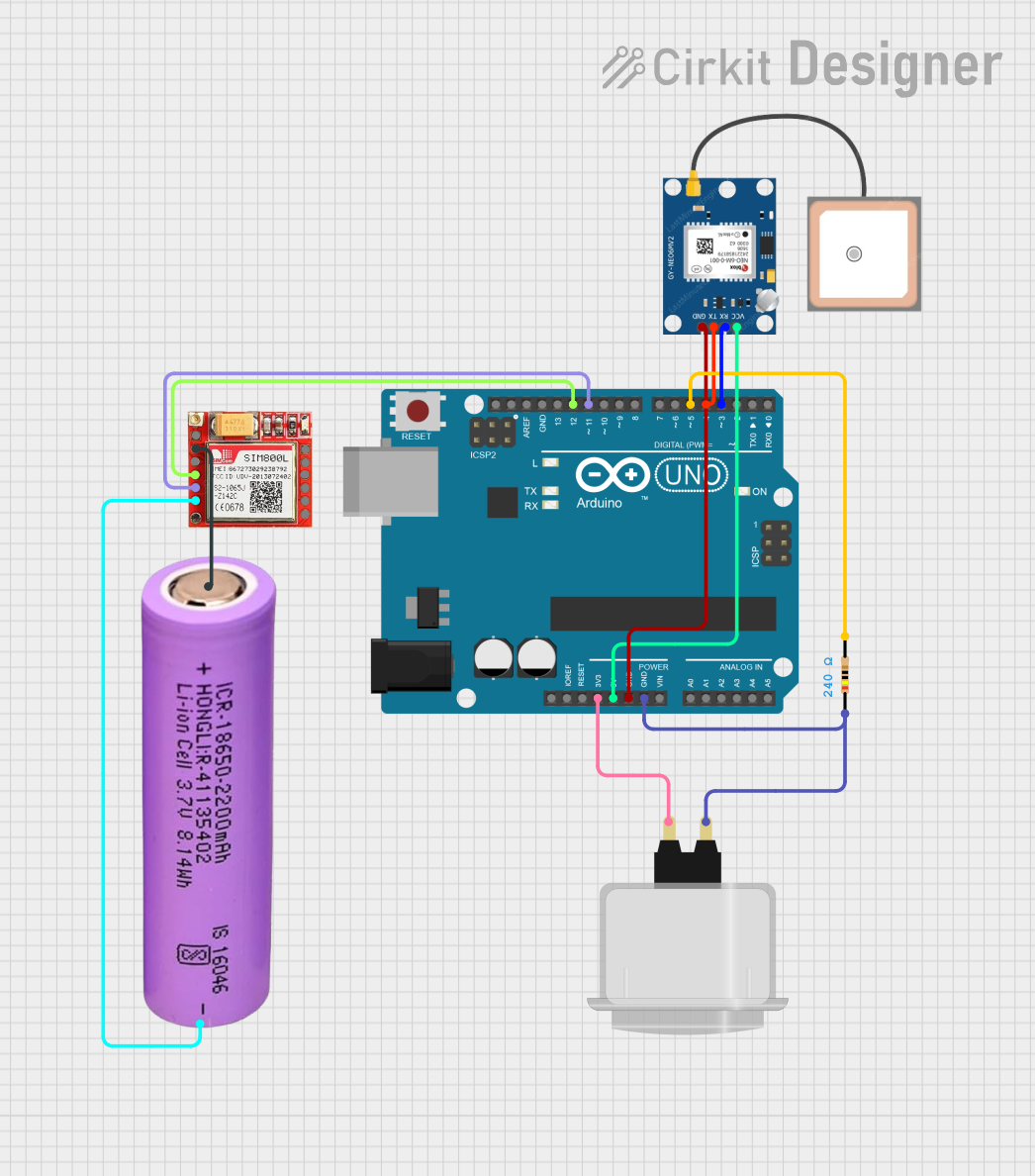
 Open Project in Cirkit Designer
Open Project in Cirkit Designer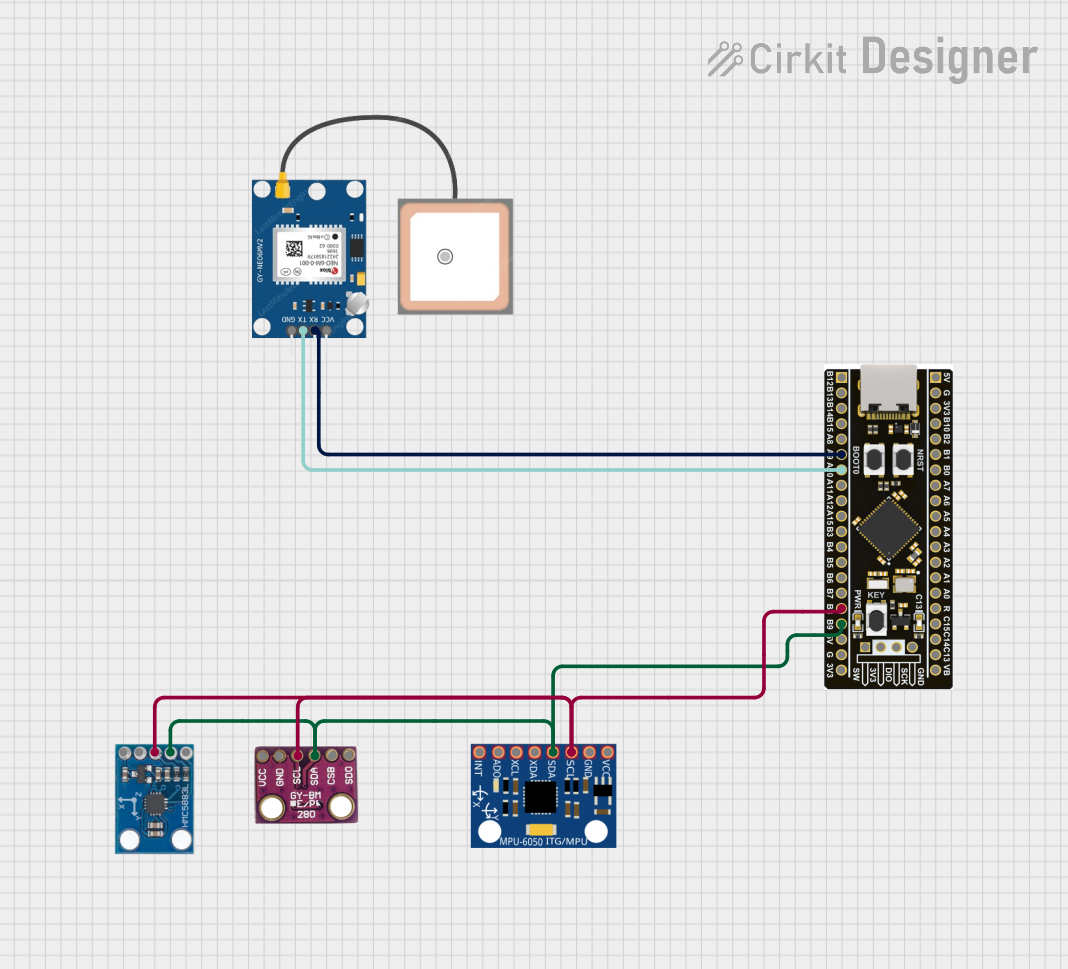
 Open Project in Cirkit Designer
Open Project in Cirkit DesignerExplore Projects Built with NEO-M8N

 Open Project in Cirkit Designer
Open Project in Cirkit Designer
 Open Project in Cirkit Designer
Open Project in Cirkit Designer
 Open Project in Cirkit Designer
Open Project in Cirkit Designer
 Open Project in Cirkit Designer
Open Project in Cirkit DesignerCommon Applications and Use Cases
- Drones and UAVs: For precise navigation and positioning.
- Robotics: To enable autonomous movement and location tracking.
- Automotive Navigation: For real-time vehicle tracking and route optimization.
- Geographic Information Systems (GIS): For mapping and surveying.
- IoT Devices: To provide location-based services in smart devices.
Technical Specifications
The NEO-M8N module is packed with advanced features and specifications to meet the demands of modern GNSS applications.
Key Technical Details
| Parameter | Specification |
|---|---|
| GNSS Support | GPS, GLONASS, Galileo, BeiDou |
| Frequency Bands | L1 (1575.42 MHz) |
| Position Accuracy | 2.5 m CEP (Circular Error Probable) |
| Time-to-First-Fix (TTFF) | Cold Start: 26 s, Hot Start: 1 s |
| Update Rate | Up to 10 Hz |
| Operating Voltage | 2.7 V to 3.6 V |
| Power Consumption | ~23 mA @ 3.0 V (continuous tracking) |
| Communication Interfaces | UART, I2C, SPI |
| Operating Temperature | -40°C to +85°C |
| Dimensions | 12.2 mm x 16.0 mm x 2.4 mm |
Pin Configuration and Descriptions
The NEO-M8N module has a standard pinout for easy integration into circuits. Below is the pin configuration:
| Pin Number | Pin Name | Description |
|---|---|---|
| 1 | VCC | Power supply input (2.7 V to 3.6 V) |
| 2 | GND | Ground connection |
| 3 | TXD | UART Transmit Data |
| 4 | RXD | UART Receive Data |
| 5 | SDA | I2C Data Line |
| 6 | SCL | I2C Clock Line |
| 7 | PPS | Pulse Per Second output for timing applications |
| 8 | RESET_N | Active-low reset input |
Usage Instructions
The NEO-M8N module is versatile and can be used in various circuits. Below are the steps and best practices for using the module effectively.
How to Use the NEO-M8N in a Circuit
- Power Supply: Connect the VCC pin to a regulated 3.3 V power source and the GND pin to ground.
- Communication Interface: Choose a communication protocol (UART, I2C, or SPI) based on your application:
- For UART, connect the TXD and RXD pins to the corresponding UART pins of your microcontroller.
- For I2C, connect the SDA and SCL pins to the I2C bus.
- Antenna Connection: Attach an active GPS antenna to the module's antenna connector for optimal signal reception.
- Pulse Per Second (PPS): Use the PPS pin for precise timing applications if required.
- Reset: Optionally, connect the RESET_N pin to a microcontroller GPIO for manual reset functionality.
Important Considerations and Best Practices
- Antenna Placement: Ensure the GPS antenna has a clear view of the sky for optimal satellite reception.
- Power Supply: Use a stable and noise-free power source to avoid interference with GNSS signals.
- Baud Rate: Configure the UART baud rate to match the default or desired setting (typically 9600 bps).
- Firmware Updates: Check for firmware updates from U-Blox to ensure the module operates with the latest features and fixes.
Example: Connecting NEO-M8N to Arduino UNO
Below is an example of how to connect the NEO-M8N module to an Arduino UNO using UART and read GPS data.
Wiring Diagram
| NEO-M8N Pin | Arduino UNO Pin |
|---|---|
| VCC | 3.3 V |
| GND | GND |
| TXD | RX (Pin 0) |
| RXD | TX (Pin 1) |
Arduino Code
#include <SoftwareSerial.h>
// Define RX and TX pins for SoftwareSerial
SoftwareSerial gpsSerial(4, 3); // RX = Pin 4, TX = Pin 3
void setup() {
Serial.begin(9600); // Initialize Serial Monitor
gpsSerial.begin(9600); // Initialize GPS module communication
Serial.println("NEO-M8N GPS Module Test");
}
void loop() {
// Check if data is available from the GPS module
while (gpsSerial.available()) {
char c = gpsSerial.read(); // Read one character from GPS
Serial.print(c); // Print the character to Serial Monitor
}
}
Notes
- Use SoftwareSerial if the Arduino's hardware UART is already in use.
- Ensure the GPS antenna is connected and has a clear view of the sky for accurate data.
Troubleshooting and FAQs
Common Issues and Solutions
No GPS Fix:
- Cause: Poor antenna placement or obstructed view of the sky.
- Solution: Place the antenna in an open area with a clear view of the sky.
No Data Output:
- Cause: Incorrect wiring or baud rate mismatch.
- Solution: Verify connections and ensure the baud rate matches the module's configuration.
Intermittent Signal Loss:
- Cause: Power supply noise or interference.
- Solution: Use a stable power source and shield the module from nearby electronic noise.
Module Not Responding:
- Cause: Module not powered or reset incorrectly.
- Solution: Check the power supply and ensure the RESET_N pin is not held low.
FAQs
Q: Can the NEO-M8N operate indoors?
A: While the module can operate indoors, signal reception may be weak or unavailable due to obstructions.Q: What is the maximum update rate of the NEO-M8N?
A: The module supports an update rate of up to 10 Hz.Q: Does the NEO-M8N support SBAS (Satellite-Based Augmentation Systems)?
A: Yes, the module supports SBAS for improved accuracy.Q: Can I use the NEO-M8N with a 5V microcontroller?
A: Yes, but you must use a level shifter to convert 5V signals to 3.3V to avoid damaging the module.
By following this documentation, users can effectively integrate and utilize the NEO-M8N GPS module in their projects.